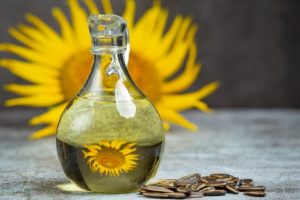
All the main target now looks to get on hops, barley malts and yeast. But, if brewage is ninety-fifth water should not we expect concerning the impact water has on flavours, aromas, and mouthfeel also? If you have ever tasted unpleasant water, it might in all probability not be an ingredient you’d need in creating a crafted brew. Frankly, water is one among the foremost economical ingredients in brewage, thus creating it the simplest. you would like the proper water chemistry for the proper brewage vogue.
Now is probably not the time for sophisticated discussions concerning atoms, ions, and therefore the periodic table, therefore the focus here is on discussing the importance of water chemistry in achieving associate degree optimum flavour in your brew. Frankly, there are several tools online to make this method easy and fun. Suppose we have a tendency to perceive many basic principles of water chemistry. In that case, homebrewers can understand what {to consider|to think concerning|to contemplate} about the water chemistry relative to future brew day.
When I was young, I spent summers on my grandparent’s farm. The property was dotted with open pits wherever somebody had explored the viability of mineral rights for iron ore; clearly, there was a presence of iron within the ground. It wasn’t a giant secret attributable to a metallic bitter style in everyone’s groundwater. The serious concentration of iron minerals within the ground gave groundwater a foul style and aroma. Now, imagine the impact such non-treated water would have had on brewing! However, even these days, municipal water will have problems on the far side of inherent mineral composition.
Water chemistry is vital because the water we tend to use in production will move with wort, esters/oils from hops, barley malts, and particularly yeast. All this additionally explains why temperatures in production are important; everything in production interacts once in answer.
In defrayment time as a homebrewer, I currently appreciate simply however sensitive people’s style area unit relative to minerals/ions and chemicals in water, I’m thinking of lactic acid for instance. Water employed in production affects yeast, malts, and hops, which can impact flavours and mouthfeel. Chemists that conduct water analysis and testing point out the Ions (exceedingly tiny particles) in water, which will greatly impact style. unadapted water contains a style and even bottled water area unit manipulated by chemists to realize the desired style profile.
So, simply however vital is water for brewage? An authority on beer is John J. Palmer. Here are a handful of comments, from his book “How to Brew ”, regarding the importance of water: “The best thanks to justifying this can be to explain 2 of the world’s most known beers and their production waters. The Pilsen region of the Czech republic was the birthplace of the {pilsener|Pilsner|Pilsener|lager|lager brewage} sort of beer. A Pils could be a crisp, golden clear lager with an exceptionally clean hoppy style. The water of Pilsen is improbable soft, freed from most minerals and extremely low in bicarbonates.”
Palmer goes more, “The reality of the matter is that dark brew can’t be brewed in Pilsen, and light-weight lagers cannot be brewed in Dublin (Ireland) while not adding the correct kind and quantity of buffering salts. And cooked malts like Muenchen and the capital of Austria, are often used with success in areas wherever the water is alkalescent (i.e., a pH scale larger than seven.5 and a carbonate level of quite two hundred components per million) to supply smart mash conditions.”
Detailed water analysis is often time intense and dear if done through a billboard testing company. however, there is also some comfort within the adage-If your water tastes smart to drink it’s in all probability adequate for your brewage.
Hard water contains total dissolved solids that area unit mineral ions suspended in answer. for instance: atomic number 20, magnesium, iron, and copper; the latter 2 leave an aluminiferous style that is delineated as lacking a balanced pleasant style. Conversely, H2O will have an equally poor quality-it all depends on the fashion of brew you’re making an attempt to supply. For example, a higher pH scale produces a drum sander mouthfeel and style.
I appreciate mouthfeel and malt flavours in craft beers. Generally, I favour the end (I decide it when taste) that lingers many seconds while not having high acid effects. On behalf of me, I actually have centred on 5 minerals in beers that appear to impact my favourite designs the most: atomic number 20, magnesium, chloride, sodium, and hydrogen carbonate. I gravitate to the sunshine, not acidity, malt flavours forward and supply smart ‘head’ character/retention. So, I actually have returned to understanding the impact water contributes once creating brewage. however nothing is straightforward, currently, I’m commencing to perceive however water chemistry reacts with wort temperature.
Dan Norris, in 2018 wrote in Black Hops, “The terms ‘hardness’ (the quantity of dissolved atomic number 20 and magnesium) and ‘alkalinity’ (the quantity of carbonate and bicarbonate) area unit 2 of the foremost vital issues once it involves obtaining your water chemistry right.”
- pH of water is vital as a result it enhances the fashion of brewage and permits the malts to figure and proteins to try to their factor. Further, yeast’s sort of a non-harsh pH scale surroundings.
- Sulphates and chloride and metallic elements, in balance, can provide off nice mouthfeel.
- As mentioned earlier, iron and copper don’t provide off nobility or aromas.
- Of my high 5 major water chemistry minerals here could be a recap of a number of the impacts these minerals could wear on beer:
- Calcium adds to friendly yeast surroundings which help with flavour sweetening. salt can add a drum sander texture to the brew.
- Magnesium will raise yeast productivity and will raise mouthfeel.
- Sodium adds to the ‘body’ of a brewery. consider it as a sweetening. watch out once victimisation of this mineral because it can add salt. (As an associate degree aside, I will bear in mind drinking beer in the faculty and plenty of my friends other flavouring on to a pint of brew. I assumed it was two-dimensional , however, to each his/her own.)
- Sulfates impact hoppy and bitterness in beers. If you wish crispness and hoppy flavors this can be your visit mineral. automatic ways & Management in Chemistry notes that “an more than sulphate provides a pointy, dry edge to well-hopped beers.
- Chloride directly impacts the body and texture of brewage, particularly if you wish malt flavors.
- Bicarbonate and carbonate impact the pH scale inherent in water.
Whatever a water analysis indicates, most each production store can have water modifying supplies-gypsum, carbonates, chalks, chloride, magnesium, etc.
My native water company gets our water from surface sources-lakes and watercourses. Below is the outline of a number of the water chemistry reports by my water district. I supply it as some extent of reference, it illustrates simply how vital it’s to possess smart water chemistry and what you would like to try to do to use it for creating smart breagues. These numbers are usually high and dictate some amending to be for brewing-amending this water is needed.
Mineral mg/l or PPM
- Iron 0.6
- pH 6.5 to 8.5
- Magnesium fifteen
- Nitrite (as N) one
- Nitrate (as N) ten
- Total Dissolved Solids one thousand
- Sulfate five hundred
- Chloride four hundred
If you are needing to begin production from an opportunity approach Scott Janish of wood Cellars takes the approach that reverse diffusion is the best water to create upon. “Aside from temperature-controlled fermentations, beginning with reverse diffusion water and building back minerals has created the most important distinction within the quality and consistency of my brews.”
Depending on what your production goals are, there area unit a superfluity of sources for facilitation. If your water comes from a municipality, get that water chemistry analysis directly from them. However, use caution as a result of these numbers aren’t constant and may change throughout the year, particularly with environmental events like rain, snow, drought, and fires. Such events can impact water emanating from surface water sources-reservoirs.
For homemade analysis, LaMotte contains a line of take a look at kits which will be purchased, via Amazon or retailers. These come extremely counseled from John golf player and Scott Janish. prices are a touch high however if you’re aiming to perform frequent water testing then it’s well worth the expenditure.
Brewer’s Friend is one among several on-line supplies that have calculation tables that may tell you exactly a way to adjust/modify your water source for production in a specific fashion. Professional Brewer is another company providing a ‘water chemistry modifier calculator’. however notice you would like to specifically take a look at results to plug that knowledge into the on-line calculator.
Because the fashion of the four basic ingredients (water, barley, hops, and yeast) you intend to brew with, move with the others–you are perpetually compromising. Tweaking one little bit of the instruction you’ll be impacting one thing else. The minerals within the supply water chemistry can in all probability ought to be adjusted, that’s a part of the art of production. The ultimate water chemistry can have an effect on the yeast that is one more reason why the mash pH scale is vital. Water might not be glamorous, however it’ll impact hop aroma, mouthfeel, character of the malt performance, and the way well the yeast can perform in going to the finished product.
Water, Yeast, Hops, and Barley malts work along and can offer you nice brew, however do not forget the water. David Ackley, holds a General Certificate in production from the Institute of production and Distilling, summarizes why water chemistry is vital, “It’s a given (good chemistry) can stop spoilage. however additionally to it, the concentration of minerals in your production water will impact not solely flavor, however additionally mash performance, acidity, hop bitterness, yeast health, body, mouthfeel, and alternative factors.” Ackley says the minerals in your production water will have a profound result on the flavour of your finished brew. I’d additionally add-head/foam.
Read our blog on Battle Born Is More Than a State Slogan, It’s a Beer With a Western Attitude






